Air defense systems in the Russian Federation. SAM "Osa" and SAM "Tor"
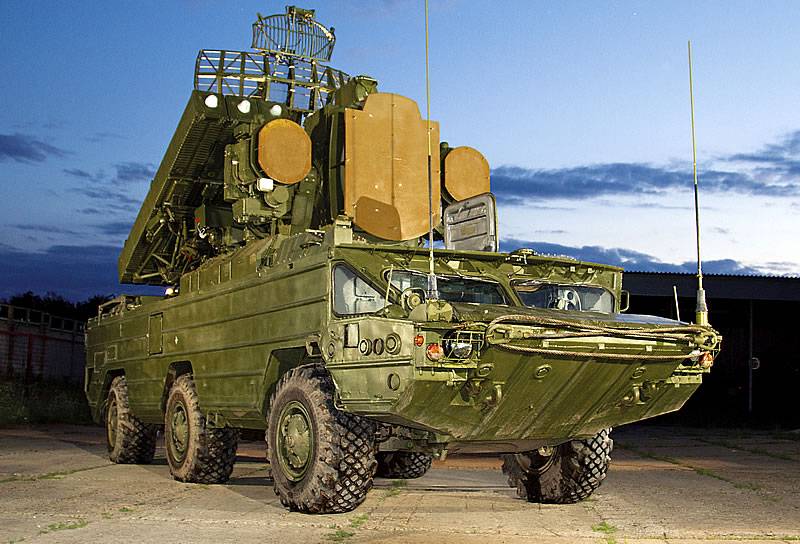
Do we have many air defense systems? In the second half of the 1950s. it became clear that anti-aircraft artillery, even with the use of gun-guided radar stations, could not provide effective protection of troops from jet combat aircraft. The first generation anti-aircraft missile systems were too bulky, had poor mobility and were not able to deal with air targets at low altitude.
SAM "Osa"
In the 1960s, simultaneously with the work on the creation of air defense systems for the battalion level (Strela-2 MANPADS) and regimental units (Strela-1 air defense systems and Shilka air defense systems), the design of the anti-aircraft missile defense system began Wasp". The highlight of the new air defense system was the placement of all radio equipment and anti-aircraft missiles on one chassis.
Initially, it was planned to use SAM systems with semi-active radar guidance as part of the Osa air defense system. However, in the development process, after evaluating the technological capabilities, it was decided to use a radio command guidance scheme. Due to the fact that the customer required high mobility and amphibiousness, the developers could not decide on the chassis for a long time. As a result, it was decided to stay on the BAZ-5937 wheeled floating conveyor. Self-propelled chassis provided the average speed of the complex on dirt roads during the day 36 km / h, at night - 25 km / h. The maximum speed on the highway is up to 80 km / h. Afloat - 7-10 km / h. The Osa air defense system included: a combat vehicle with 4 9M33 missiles, with launch, guidance and reconnaissance means, a transport and loading vehicle with 8 missiles, and loading means, as well as maintenance and control vehicles mounted on trucks.
The process of creating and refining the Osa air defense system was very difficult, and the development time of the complex significantly went beyond the given framework. In fairness, it is worth saying that the Americans could not bring to mind the conceptually similar SAM Mauler. The Osa air defense missile system was put into service on October 4, 1971, 11 years after the issuance of the decision to begin development.
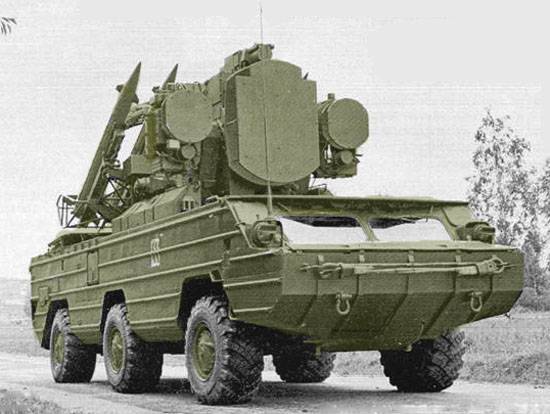
Combat vehicle SAM "Osa"
Due to the fact that such complexes have not been in the troops for a long time, few people now remember that the wasp missiles of the first modification of the Osa air defense system did not have transport-launch containers. The 9M33 rocket with a solid-fuel engine was transferred to the troops in fully equipped form and did not require adjustment and verification work, except for routine spot checks at arsenals and bases no more than once a year.
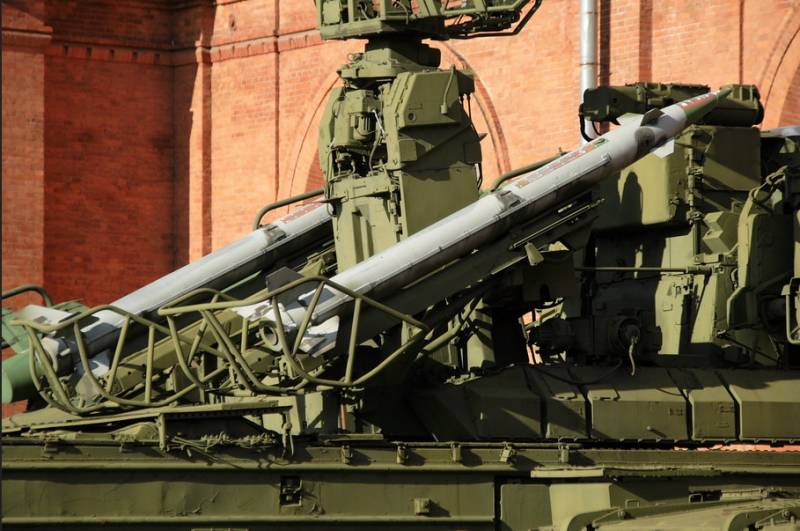
9M33 missiles on a combat vehicle of the Osa air defense system at the Museum of Artillery, Engineering and Signal Troops
9M33 missiles, made according to the "duck" scheme, with a starting weight of 128 kg was equipped with a 15-kg warhead. The length of the rocket - 3158 mm, diameter - 206 mm, wingspan - 650 mm. The average speed in the controlled flight section is 500 m / s.
The Osa air defense system could hit targets flying at speeds of up to 300 m / s at altitudes of 200-5000 m in a range of 2,2 to 9 km (with a decrease in maximum range to 4-6 km for targets flying at low altitudes, - 50-100 m). For supersonic targets (at a speed of up to 420 m / s), the far boundary of the affected area did not exceed 7,1 km at altitudes of 200-5000 m. The course parameter was from 2 to 4 km. The probability of destruction of the F-4 Phantom II fighter, calculated according to the results of modeling and combat launches, was 0,35-0,4 at an altitude of 50 m and increased to 0,42-0,85 at altitudes of more than 100 m.
Due to the fact that the combat crew of the Osa air defense system had to deal with targets operating at low altitudes, the processing of their parameters and defeat should be carried out as quickly as possible. Given the mobility and the ability of the complex to operate offline, a number of new technical solutions were applied. Features of the Osa air defense system required the use of multifunctional antennas with high output parameters, capable of moving the beam to any point in a given spatial sector in a time not exceeding fractions of a second.
A radar for detecting air targets with an antenna rotation speed of 33 rpm worked in the centimeter frequency range. Stabilization of the antenna in the horizontal plane made it possible to search and detect the target during the movement of the complex. The search by elevation took place due to the transfer of the beam between three positions at each revolution. In the absence of organized interference, the station detected a fighter flying at an altitude of 5 m at a range of 000 km (at an altitude of 40 m - 50 km).
The centimeter-range target tracking radar provided automatic target tracking at a range of 14 km at a flight altitude of 50 m and 23 km at a flight altitude of 5 m. The tracking radar had a system for selecting moving targets, as well as various means of protection against active interference. In the case of suppression of the radar channel, tracking was carried out using a detection station and a television optical sight.
The Osa air defense command and control system used two sets of medium and wide beam antennas to capture and further enter into the beam of the target tracking station two anti-aircraft guided missiles at launch with an interval of 3 to 5 seconds. When firing at low-flying targets (flight altitude from 50 to 100 meters), the "hill" method was used, which provided the guided missile to approach the target from above. This made it possible to reduce the errors of launching missiles at the target and to exclude premature operation of the radio fuse when the signal was reflected from the ground.
In 1975, the Osa-AK air defense system entered service. Outwardly, this complex differed from the earlier model by a new launching device with six 9M33M2 missiles placed in transport-launch containers. The refinement of the radio fuse allowed to reduce the minimum height of the defeat to 25 m. A new missile could hit targets at a range of 1500-10000 m.
Thanks to the improvement of the calculating and resolving equipment, it was possible to increase the accuracy of guidance and to fire at targets flying at a higher speed and maneuvering with an overload of up to 8 G. The noise immunity of the complex has improved. Some of the electronic units were transferred to a solid-state element base, which reduced their mass, dimensions, power consumption and increased reliability.
As of the second half of the 1970s, the Osa-AK air defense system was considered a fairly advanced complex, quite effective against tactical combat aircraft aviation operating at an altitude of up to 5000 m. However, with all its merits, this mobile complex of the division link could not with high probability disrupt the attacks of anti-tank helicopters of the armed TOW and HOT ATGMs. To eliminate this drawback, a 9M33MZ missile launcher was created with a minimum altitude of less than 25 m, an improved warhead and a new radio fuse. When firing at helicopters at an altitude of less than 25 meters, the complex used a special method of guiding an anti-aircraft guided missile with semi-automatic tracking of targets in angular coordinates using a television optical sight.
The Osa-AKM anti-aircraft missile system, which was adopted in 1980, had the ability to destroy helicopters hovering at almost zero altitude and flying at speeds of up to 80 m / s at ranges from 2000 to 6500 m with a heading parameter of up to 6000 m. This OSA-AKM got the opportunity to fire at helicopters with rotating propellers located on the ground.
According to the reference data, the probability of hitting the AH-1 Huey Cobra helicopter on the ground was 0,07-0,12, flying at a height of 10 meters - 0,12-0,55, hovering at a height of 10 meters - 0,12-0,38 . Although the probability of defeat in all cases was relatively small, launching a missile on a helicopter hiding in the folds of the terrain in most cases led to a failure of the attack. In addition, the awareness by pilots of combat helicopters that flying at extremely low altitudes no longer guarantees invulnerability from air defense systems had a considerable psychological impact. The creation in the USSR of the Osa-AKM mass mobile air defense system with a range of destruction greater than the ATGM firing range led to the acceleration of work on the longer-range AGM-114 Hellfire ATGMs with laser and radar guidance.
The use of advanced technical solutions in the Osa family air defense systems provided them with enviable longevity. Due to the high energy ratio of the signal reflected from the target to the interference, it is possible to use radar channels to detect and track targets even in case of intense interference, and when suppressing radar channels - a television optical sight. The Osa air defense system surpassed all mobile generation anti-aircraft missile systems in terms of noise immunity.
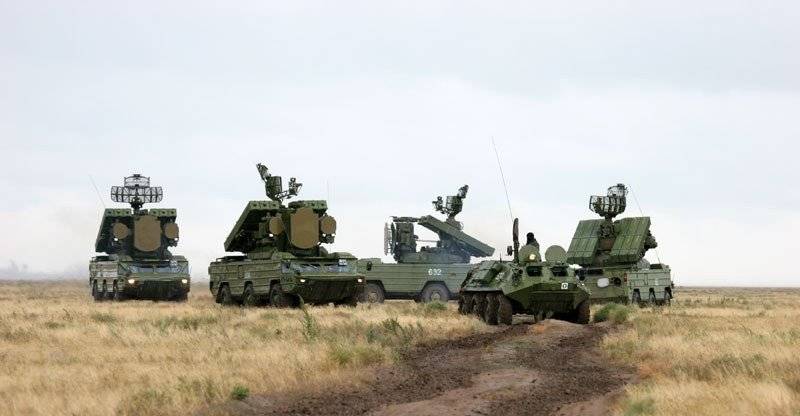
The Soviet motorized rifle divisions had a regiment of the Osa air defense system, in most cases consisting of five anti-aircraft missile batteries and a regiment command post with a control battery. Each battery had four combat vehicles and a battery command post equipped with a PU-12 (M) command post. The regiment’s control battery included the control center PU-12 (M), communication machines, and a low-altitude radar detection station P-15 (P-19).
Serial production of the Osa family air defense systems was carried out from 1972 to 1989. These complexes were widely used in the Soviet Army. Until now, about 250 Osa-AKM are in the armed forces of Russia. However, unlike the air defense missile systems of the regiment Strela-10M2 / M3, the leadership of the Russian Defense Ministry did not consider it necessary to modernize the Osa-AKM air defense systems. According to available information, in the last few years, up to 50 complexes per year are decommissioned. In the near future, our army will finally part with the Osa-AKM air defense system. In addition to obsolescence, this is due to the deterioration of the chassis, radio equipment and the lack of spare electronic components necessary to maintain the hardware in working condition. In addition, all available 9M33MZ missiles have long been outside the warranty period.
SAM "Thor"
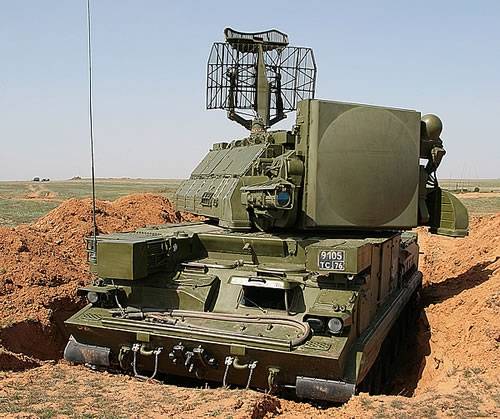
The first "alarm bells" regarding the need to improve air defense systems of the divisional level were made in the early 1970s, when it became clear that the first versions of the Osa air defense system were unable to effectively counter anti-tank helicopters using the "jump" tactic. In addition, at the final stage of the Vietnam War, the Americans actively used the planning bombs AGM-62 Walleye and missiles AGM-12 Bullpup with television, radio command and laser guidance. AGM-45 Shrike homing anti-radar missiles posed a great danger to airborne radar control systems.
In connection with the emergence of new threats, it became necessary to intercept combat helicopters before launching anti-tank missiles and guided aircraft weapons from them after separating them from the carrier aircraft. To solve such problems, it was necessary to develop a mobile anti-aircraft missile complex with a minimum reaction time and several guidance channels for anti-aircraft missiles.
Work on the creation of a divisional autonomous self-propelled air defense system "Tor" began in the first half of 1975. When creating the new complex, it was decided to use the vertical missile launch scheme, placing eight SAMs along the axis of the tower of the combat vehicle, protecting them from adverse weather conditions and from possible destruction by shell fragments and bombs. After changing the requirements for the possibility of speeding up water barriers by military anti-aircraft complexes, the main thing was to ensure the same speed and passability with tanks and BMP covered parts. In connection with the need to increase the number of SAMs ready for use and deploy a radio instrument complex, it was decided to switch from wheeled to a heavier tracked chassis.
The GM-355 chassis, unified with the Tunguska anti-aircraft gun and missile system, was used as a base. Special equipment was placed on the tracked vehicle, as well as a rotary antenna launcher with a set of antennas and vertical launchers for anti-aircraft missiles. The complex has its own power source (gas turbine unit), which provides power generation. The turbine’s exit time to operating mode does not exceed a minute, and the total time for putting the complex into combat readiness is about three minutes. Moreover, the search, detection and recognition of targets in the air is carried out both on the spot and in motion.
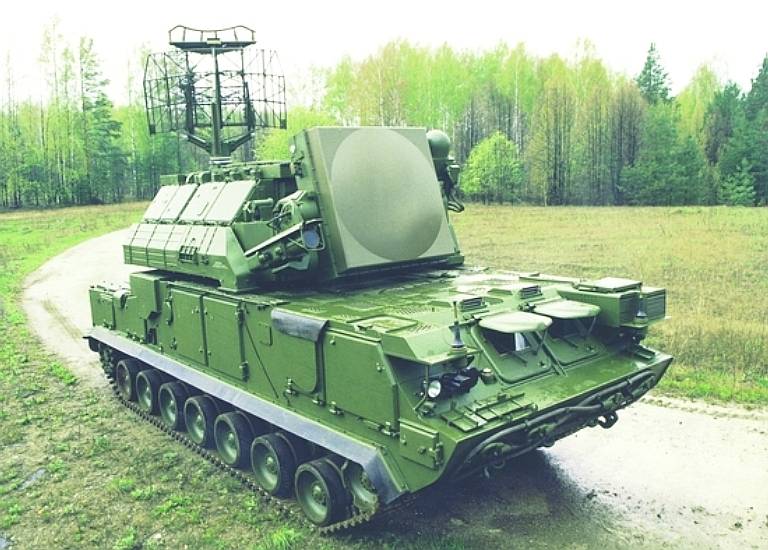
The mass of the air defense system in the combat position is 32 tons. Moreover, the mobility of the complex is at the level of the tanks and infantry fighting vehicles available in the troops. The maximum speed of the Tor complex on the highway reached 65 km / h. Cruising range - 500 km.
When creating the "Tor" air defense system, a number of interesting technical solutions were applied, and the complex itself had a high novelty coefficient. 9M330 anti-aircraft missiles are located in the launcher of a combat vehicle without TPK and are launched vertically with the help of powder catapults.
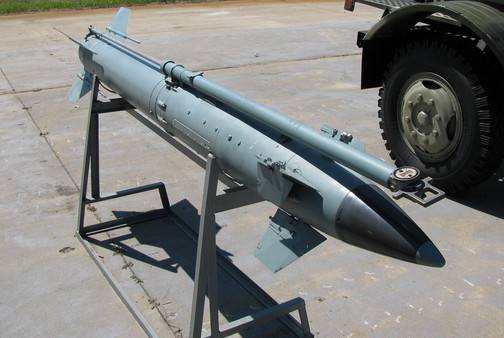
SAM 9M330
9M330 anti-aircraft missile with radio command guidance is made according to the "duck" scheme and is equipped with a device that provides gas-dynamic declination after launch. The rocket used folding wings, which were opened and fixed in flight positions after launch. The length of the rocket is 2,28 m. Diameter - 0,23 m. Weight - 165 kg. The mass of the fragmentation warhead is 14,8 kg. Loading missiles into the combat vehicle was carried out using a transport-loading machine. It takes 18 minutes to load new missiles into the launcher.
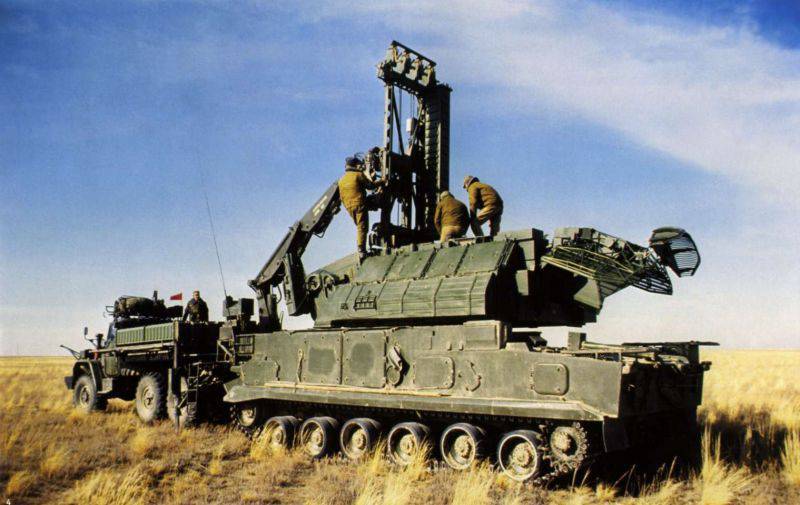
After receiving a command to launch a missile launcher, it is thrown out of the launcher by a powder charge at a speed of about 25 m / s. After this, the rocket deviates toward the target, and the main engine starts.
Since the solid-fuel engine starts already after the rocket is already oriented in the right direction, the construction of the trajectory is carried out without significant maneuvering, leading to a loss of speed. Thanks to the optimization of the trajectory and the advantageous engine operation mode, the firing range was brought up to 12000 m. Reach in height was 6000 m. Compared to the Osa air defense system, the ability to destroy targets at extremely low altitude was significantly improved. There was an opportunity to successfully deal with an air enemy flying at a speed of up to 300 m / s, at an altitude of 10 m. Interception of high-speed targets moving at a speed twice the sound was possible at a distance of 5 km, with a maximum height of 4 km. Depending on the speed and directional parameters, the probability of hitting aircraft with one missile is 0,3-0,77, helicopters 0,5-0,88, and remotely piloted aircraft 0,85-0,95.
On the tower of the combat vehicle of the Tor air defense missile system, in addition to eight cells with SAM, there is a target detection station and a guidance station. Processing of information about air targets is carried out by a special computer. The detection of air targets is carried out by a coherent pulse radar all-around viewing, operating in the centimeter range. The target detection station is capable of operating in several modes. The main one was the review mode, when the antenna made 20 revolutions per minute. The automation of the complex is capable of tracking up to 24 targets at a time. In this case, the SOC could detect a fighter flying at an altitude of 30-6000 m at a distance of 25-27 km. Guided missiles and gliding bombs are confidently taken for escort at a range of 12-15 km. The detection range of helicopters with a rotary propeller on the ground is 7 km. When the enemy sets strong passive interference for the target detection station, it is possible to blank signals from the jammed direction and the distance to the target.
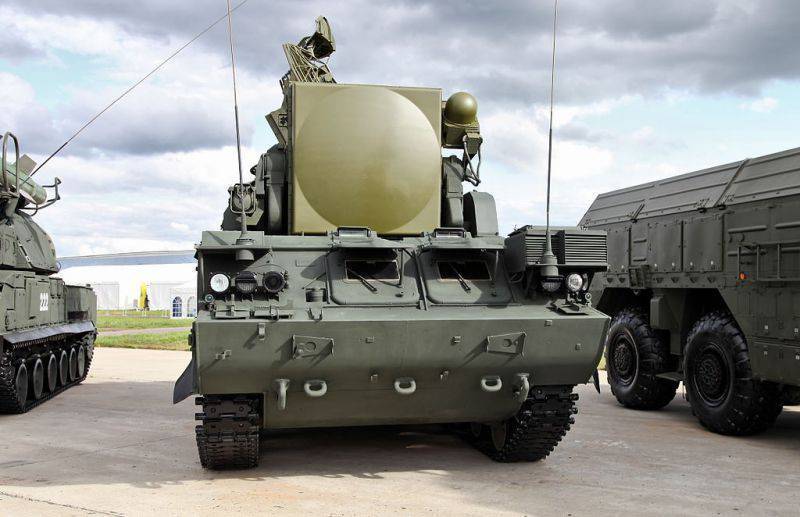
In front of the tower is a phased array of coherent-pulse radar guidance. This radar provides tracking of the detected target and guidance of guided missiles. At the same time, the target was tracked in three coordinates and one or two missiles were launched, followed by their aiming at the target. The guidance station has a command transmitter for missiles.
Tests of the Tor air defense system began in 1983, and adoption was adopted in 1986. However, due to the high complexity of the complex, its development in mass production and in the troops was slow. Therefore, in parallel, the serial construction of the Osa-AKM air defense system continued.
Like complexes of the Osa family, the serial Tor air defense systems were reduced to anti-aircraft regiments attached to motorized rifle divisions. The anti-aircraft missile regiment included a regiment control point, four anti-aircraft batteries, service and support units. Each battery included four 9A330 combat vehicles and a command post. At the first stage, the “Tor” combat vehicles were used in conjunction with the regimental and battery control centers of the PU-12M. At the regimental level, in the future, it was planned to use the MA22 combat control machine in conjunction with the MP25 information collection and processing machine. The command post of the regiment controlled the air situation using radar P-19 or 9C18 "Dome".
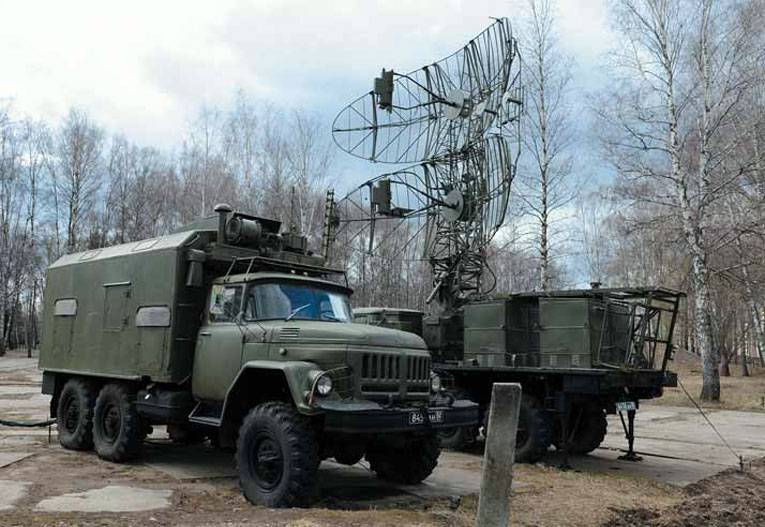
Radar P-19
Immediately after the adoption of the Tor air defense system, work began on its modernization. In addition to expanding combat capabilities, it was envisaged to increase the reliability of the complex and improve ease of use. During the development of the Tor-M1 air defense system, the electronic components of the combat vehicle and the battery level control were primarily updated. The hardware of the modernized complex includes a new computer with two target channels and selection of false targets. During the modernization of the SOC, a three-channel digital signal processing system was introduced. This has greatly improved the ability to detect air targets in a complex jamming environment. The capabilities of the guidance station have increased in terms of escorting helicopters hovering at low altitude. A target tracking machine was introduced into the television optical sight. SAM "Tor-M1" was able to simultaneously shell two targets, with two missiles pointing at each target. The reaction time was also reduced. When working from a position, it was 7,4 s, when shooting with a short stop - 9,7 s.
For the complex "Tor-M1" was developed anti-aircraft guided missile 9M331 with improved characteristics of the warhead. In order to accelerate the loading process, a missile module consisting of a transport and launch container with four cells was used. The process of replacing two modules with TZM took 25 minutes.
The battery actions of the Tor-M1 air defense system are carried out from the unified command post "Rank" on the MT-LBu self-propelled chassis. The command vehicle "Rangier" was equipped with a set of special equipment designed to receive information about the air situation, process the received data and issue commands to combat vehicles of anti-aircraft systems. Information on 24 targets detected by the radar interacting with the Rangier was displayed on the indicator of the control room operator. It was also possible to obtain information from battery combat vehicles. The crew of a self-propelled command post, consisting of 4 people, processed data on targets and issued commands to combat vehicles.
SAM "Tor-M1" was adopted in 1991. But in connection with the collapse of the USSR and a reduction in the defense budget, very few modernized complexes were received by the Russian armed forces. The construction of the Tor-M1 air defense system was mainly carried out on export orders.
Since 2012, the Russian army began to receive air defense systems "Tor-M1-2U." Detailed characteristics of this complex were not announced. A number of experts believe that changes in the hardware mainly affected the means of displaying information and the computer system. In this regard, a partial transition was made to components of foreign production. There has also been some increase in combat performance. There is information that the Tor-M1-2U air defense system is capable of firing at four targets simultaneously, with two missiles pointing at each.
As in the case of the previous modification, the supply volumes of Tor-M1-2U to the Russian armed forces were small. Several complexes of the experimental series arrived in the Southern Military District in November 2012. As part of the State Defense Order for 2013, the Ministry of Defense of the Russian Federation in 2012 concluded a contract with OAO Izhevsk Electromechanical Plant Kupol for the amount of 5,7 billion rubles. As part of this contact, the manufacturer undertook to transfer to the customer 2013 combat vehicles, four maintenance vehicles, a set of spare parts, 12 transport-loading vehicles, a set of equipment for testing missiles by the end of 12. In addition, the contract provided for the supply of battery and regimental control machines.
Based on the latest serial modification of the Tor-M2 air defense system, several options have been created that differ in hardware and chassis. A dramatic increase in the combat characteristics of the new complex was achieved through the use of new radio equipment, anti-aircraft missiles with an expanded destruction zone. There was also the opportunity to fire on the go without stopping. The most noticeable external difference between the Tor-M2 SAMs from earlier versions is another antenna of the target detection station with a slotted HEADLIGHT. The new SOC is capable of operating in a complex jamming environment and is well placed to detect air targets with low ESR.
The new computing complex allowed expanding the capabilities of information processing and simultaneously tracking 48 goals. The Tor-M2 combat vehicle is equipped with an electron-optical detection system capable of operating in the dark. There was an opportunity to exchange radar information between combat vehicles within the line of sight, which expands situational awareness and allows you to rationally distribute air targets. Increasing the degree of automation of combat work has reduced the crew to three people.
The maximum range of hitting a target flying at a speed of 300 m / s when using 9M331D missiles is 15 m. Reach in height is 000-10 m. In terms of course, it is up to 10000 m. It is possible to simultaneously fire 8000 targets with guidance of 4 missiles. All equipment of the anti-aircraft complex, at the request of the customer, can be installed on a wheeled or tracked chassis. All the differences in combat vehicles in this case are only in the characteristics of mobility and operating features.
“Classic” is the “Tor-M2E” on a caterpillar chassis, designed to provide air defense to tank and motorized rifle divisions. SAM "Tor-M2K" mounted on a wheeled chassis, developed by the Minsk Wheel Tractor Plant. There is also a modular version - “Tor-M2KM”, which can be placed on any self-propelled or towed wheeled chassis of suitable load capacity.
At the Victory Military Parade on Red Square on May 9, 2017, the Tor-M2DT, an Arctic version of an air defense system with a combat vehicle based on the DT-30 two-link tracked conveyor, was presented. According to information voiced by the RF Ministry of Defense, 12 Tor-M2DT air defense systems are available in a separate motorized rifle brigade of the North fleet.
At the time of its appearance, the Tor air defense system surpassed all foreign and domestic anti-aircraft systems in its class. Abroad has not yet been created anti-air system with similar capabilities. At the same time, it is a very complex and expensive complex that requires constant qualified service and maintenance by specialists of the manufacturer. Otherwise, it is practically impossible to maintain the complexes existing in the troops in working condition for a long period of time. This is confirmed by the fact that the Tor air defense system, remaining after the division of Soviet military property in Ukraine, is now not operational.
According to The Military Balance 2019, the Ministry of Defense of the Russian Federation has more than 120 complexes of the Tor family at its disposal. A number of open sources indicate that the Tor air defense system, built in the late 1980s and early 1990s, is still in active use after restoration and partial modernization. However, it should be recognized that after the Osa-AKM air defense system was removed from service in the air defense divisions of the divisional and brigade level of the Russian army, a deficiency of modern anti-aircraft systems could be able to combat air attack means in the dark and in low visibility conditions.
To be continued ...
- Linnik Sergey
- Do we have many air defense systems? Anti-aircraft artillery and MANPADS
Do we have many air defense systems? SAM "Strela-10", SAM "Bagulnik" and ZAK "Derivatsiya-PVO"
Do we have many air defense systems? ZPRK "Tunguska" and ZRPK "Shell"
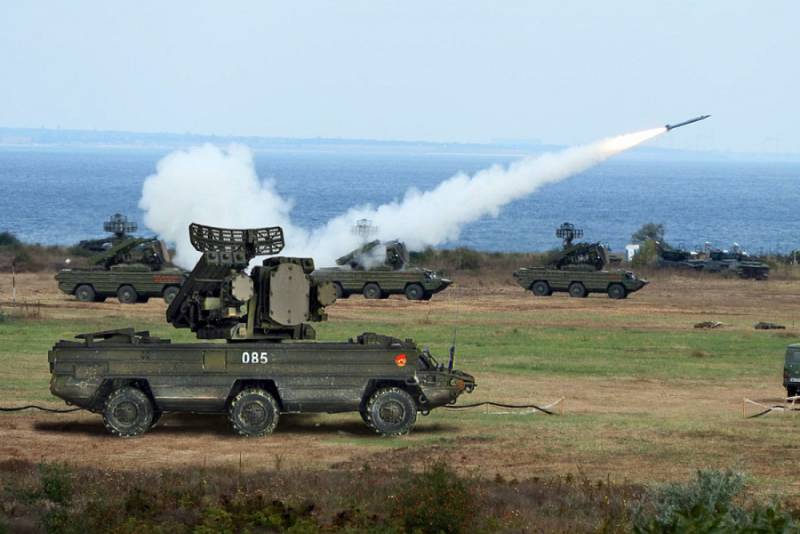
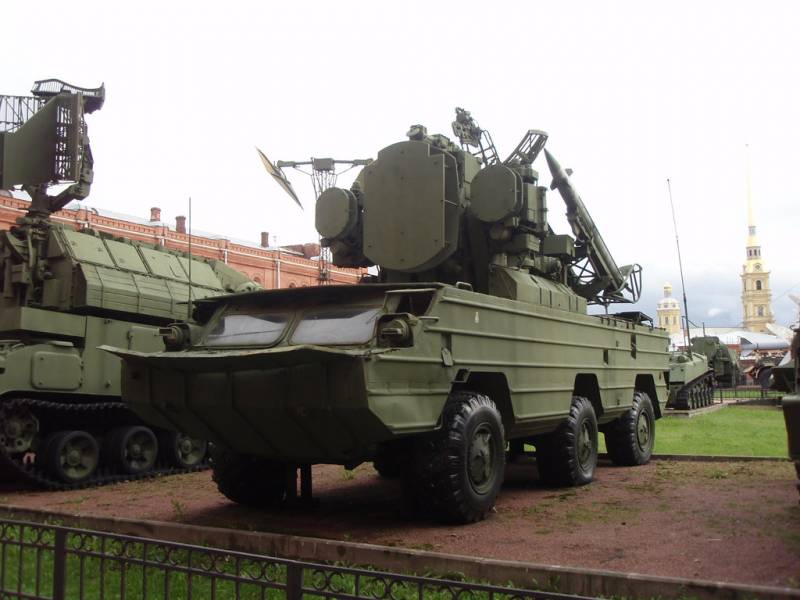
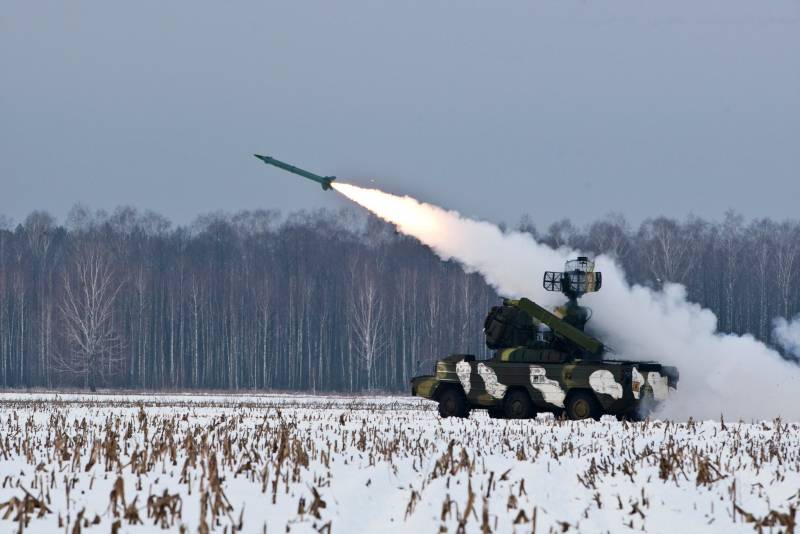
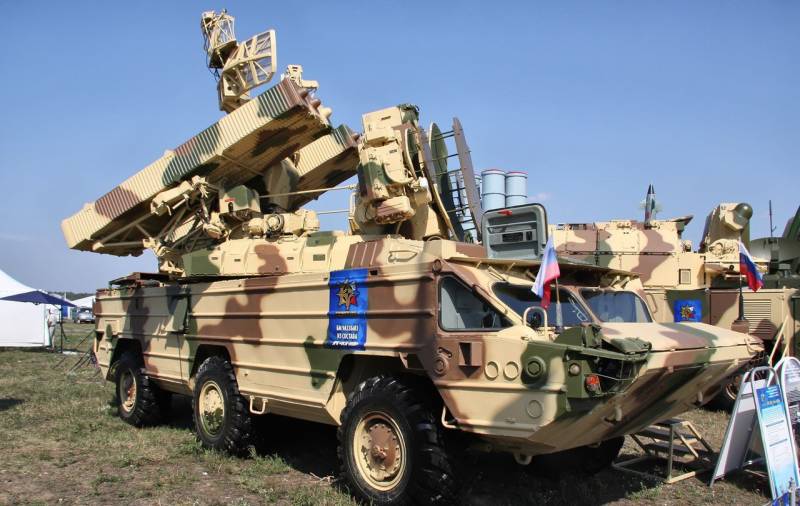
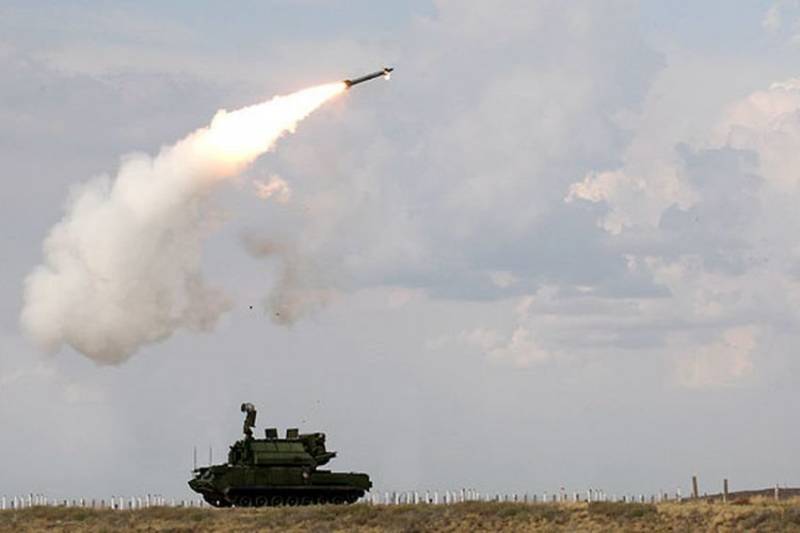
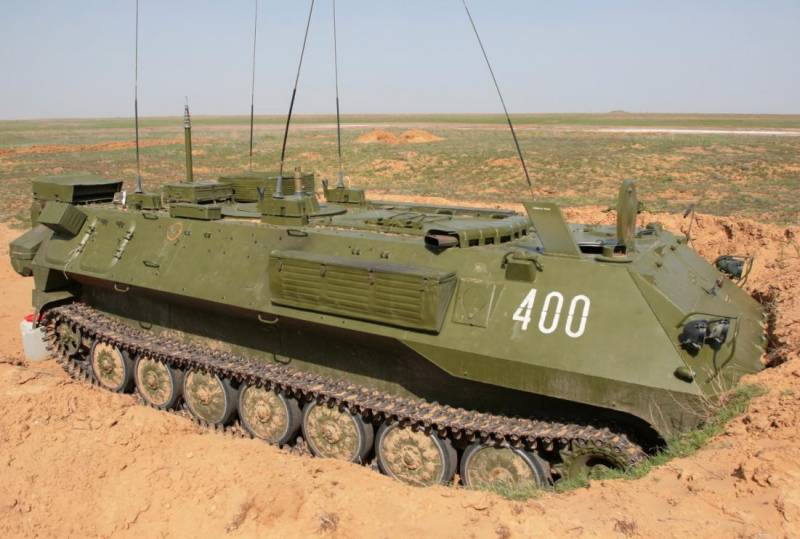
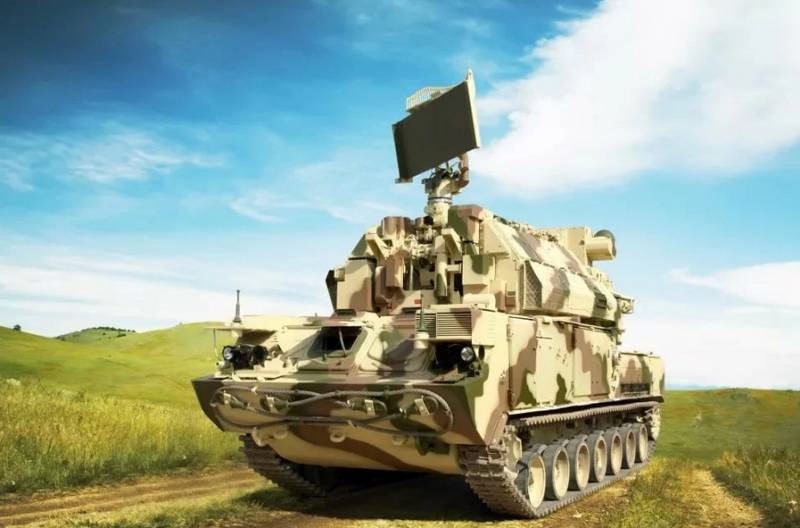
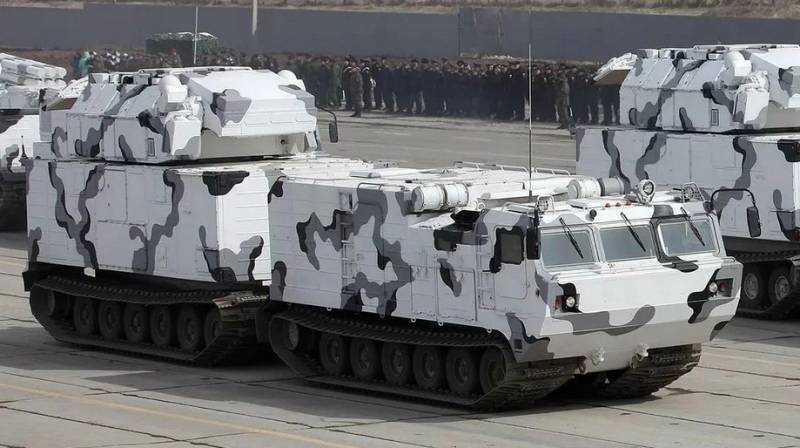
Information